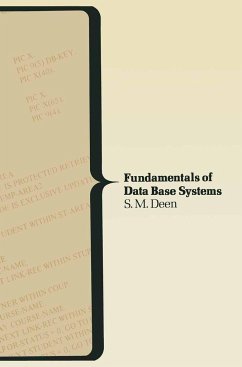
Data Base Administration

PAYBACK Punkte
39 °P sammeln!
In modem organizations, data has been added to the classical economic assets of land, labor, and capital. Data on company products, finances, and operations are gathered into data bases that are used to support management reporting and decision making. Effective use of these data bases requires control over their design and development and coordination among the various users. The exercise of these management functions is called data base administration (DBA). DBA is an evolutionary area. In many organizations, it was formed as a response to the problems created by the installation of sophisti...
In modem organizations, data has been added to the classical economic assets of land, labor, and capital. Data on company products, finances, and operations are gathered into data bases that are used to support management reporting and decision making. Effective use of these data bases requires control over their design and development and coordination among the various users. The exercise of these management functions is called data base administration (DBA). DBA is an evolutionary area. In many organizations, it was formed as a response to the problems created by the installation of sophisticated systems for data base management. As a result, the practice of DBA has been strongly influ enced by its technological and organizational environment. The size, organiza tional position, staffing, and defined role of DBA vary from firm to firm. How ever, certain fundamental tasks and responsibilities are, or should be, recognized as the province of DBA. To date, literature on the DBA function is sparse. Most texts on data base management systems (Date, 1975; Kroenke, 1977; Martin, 1978; Sprowls, 1976; Tsichritzis and Lochovsky, 1977)_ discuss DBA as one aspect of that technology.














